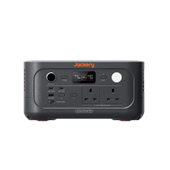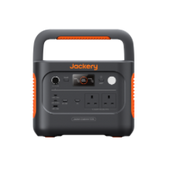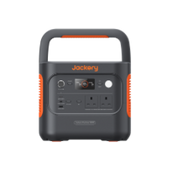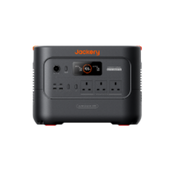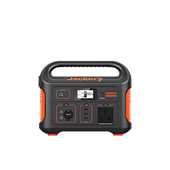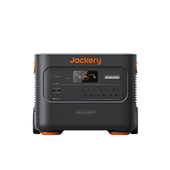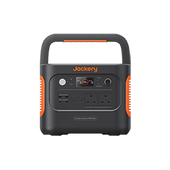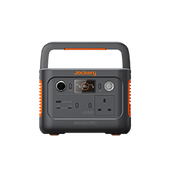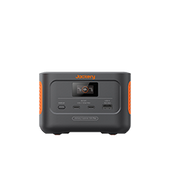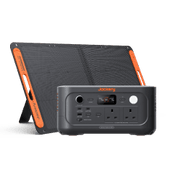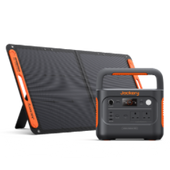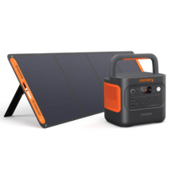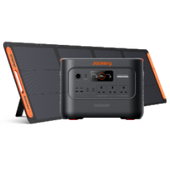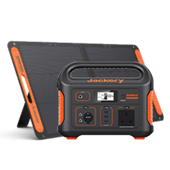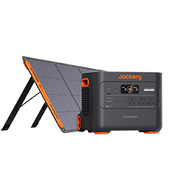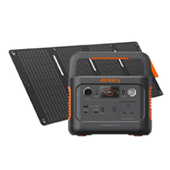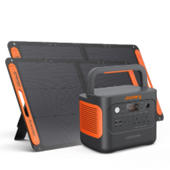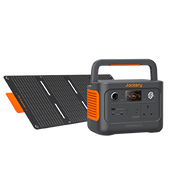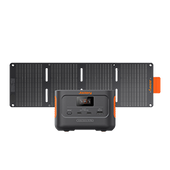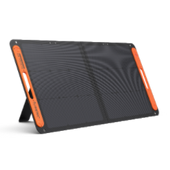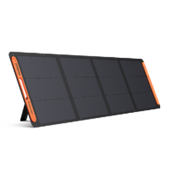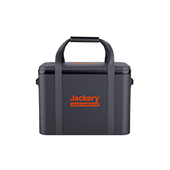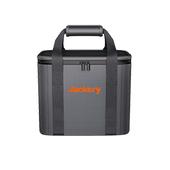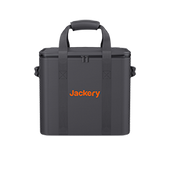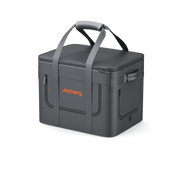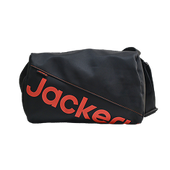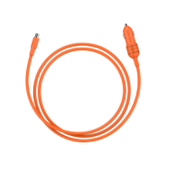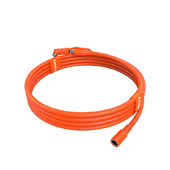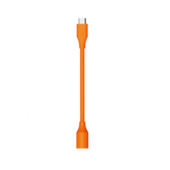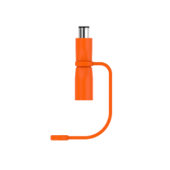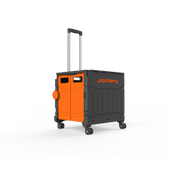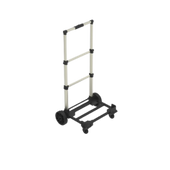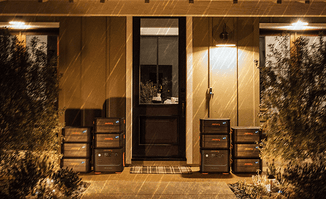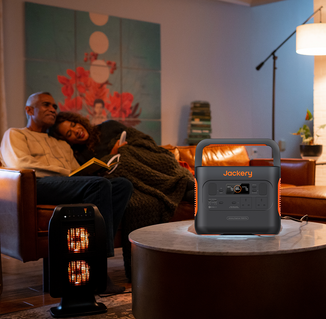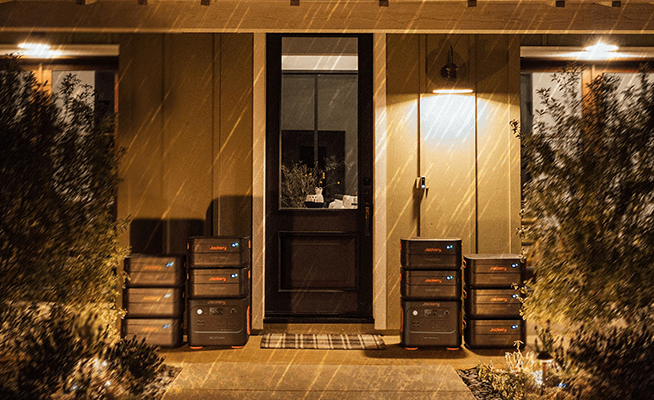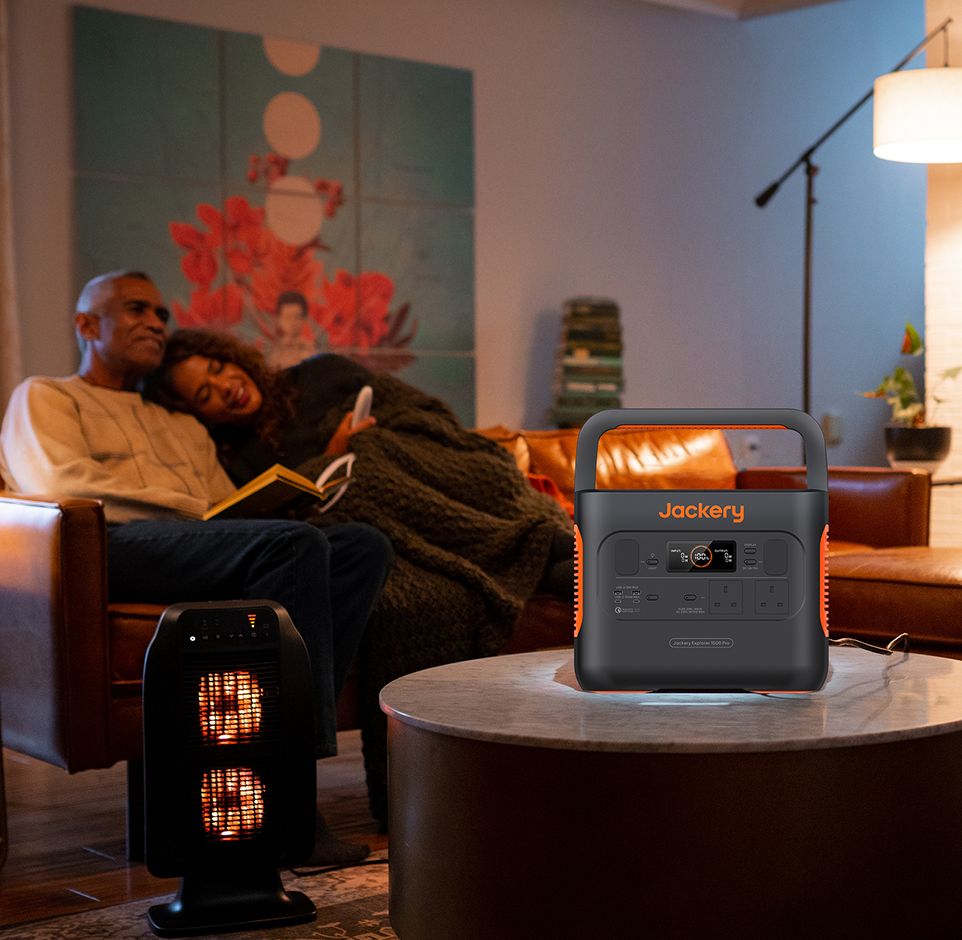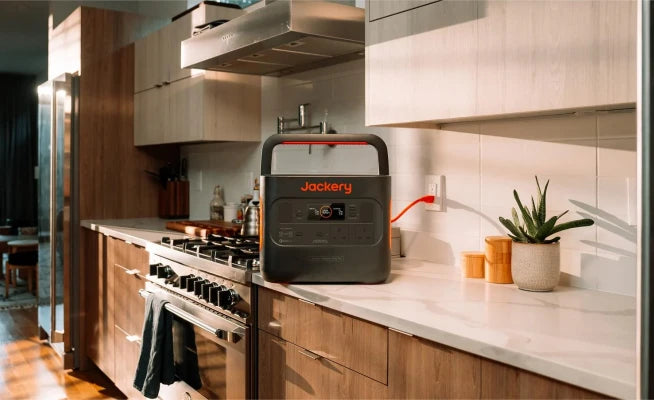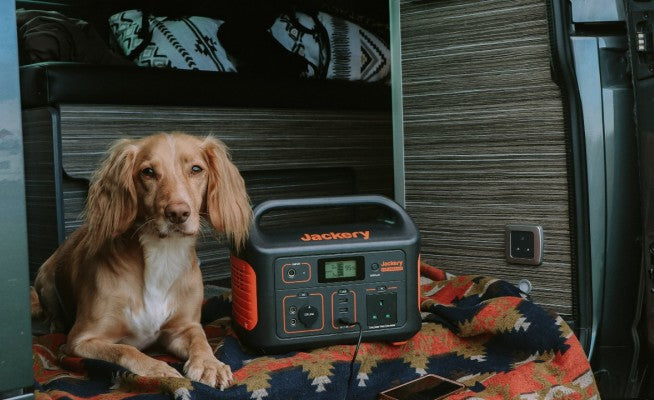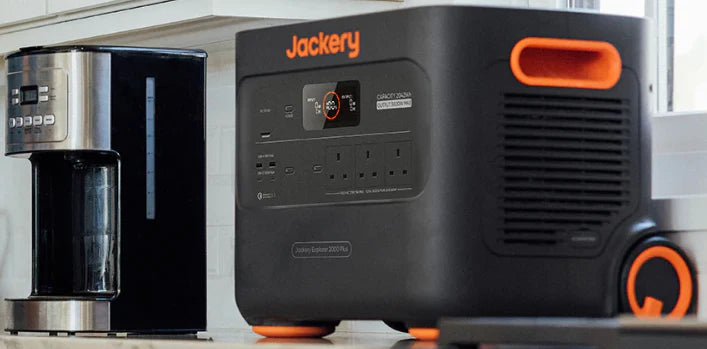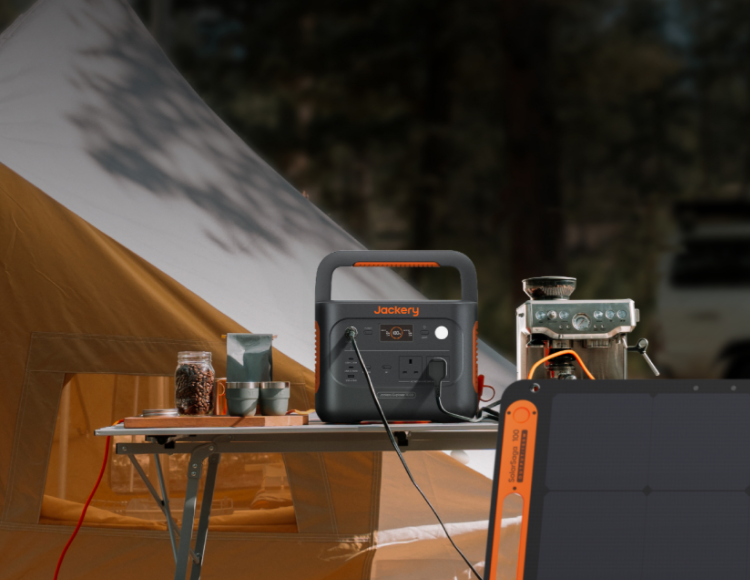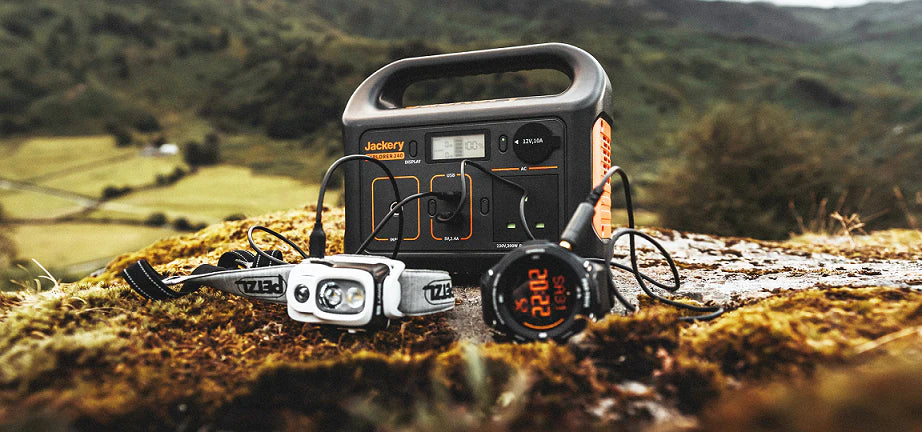Inflating a SUP by hand may be exhausting, particularly before a long day on the water. Electric SUP pumps provide a rapid, hands-free option, but many paddlers question whether portable power stations like Jackery can keep up. This tutorial explores the various types of SUP pumps, explains their operation, and provides an in-depth examination of their power requirements.
We'll also see whether portable power banks like the Jackery Explorer 500 and Explorer 300 Plus can consistently run SUP pumps in the UK. From inflating speed to battery capacity, this resource can help you select the best configuration for stress-free paddleboarding.
|
Key Takeaways: |
|
What Is An Electric Sup Pump?
An electric pump is one of the most useful accessories for a stand-up paddleboard. Whether it's your first time on a SUP or you're an experienced paddle boarder, the hands-free convenience of an electric paddle board pump is unrivalled.
Electric SUP board pumps save you energy from manual pumping, allowing you to get on the water quicker. Instead of manually inflating your paddleboard and then getting ready to enter the water, you can change into your clothing, apply sunscreen, fill your water bottles, and do other tasks. In contrast, your iSUP is being inflated by an electric pump.
Electric SUP Pumps are specifically designed to address the issue of inflating a paddleboard. They have two stages: a high-flow/low-pressure stage that inflates the board from flat to around 1 PSI, followed by a low-flow/high-pressure stage that takes your paddleboard to its ultimate pressure. Each pump has an automated cutoff that may be adjusted to your desired pressure. When the board reaches that pressure, the pump will automatically cut off to avoid over-pressurisation.
Previously, electric SUP pumps needed you to connect directly to your vehicle's battery or plug into a 12V outlet ("cigarette lighter" in your car). Many electric pumps now feature lithium-ion batteries and can inflate multiple paddleboards quickly and efficiently.
What Does a Good SUP Pump Do?
We've all been there: arrived at the water's edge only to fight with backbreaking, sluggish pumps, weary and out of breath by the time the board was completely inflated. It's the worst aspect of the paddleboarding experience, which is why a decent SUP Pump is vital.
A high-quality pump will allow you to spend more time on the water, enjoying your whole paddleboarding experience, rather than huffing and puffing on shore. A decent pump does more than bring your board to the appropriate pressure. It also makes the whole activity more relaxing and pleasurable, reduces board inflation and deflation times, and simplifies your paddleboarding life.

How Does a SUP Board Electric Pump Work?
The electric pump is intended to be user-friendly and easy to operate. It contains the following:
Body: With a pneumatic dial (PSI gauge), the air pressure may be adjusted from 1 to 15 PSI. When the predetermined setting is achieved, the pump will immediately stop, ensuring that your paddle board is not overinflated. There are also two connection ports where you may attach the hose to inflate or deflate your iSUP, a connector for your preferred power cable adapter, and on/off switches.
Inflation hose: A strong, flexible inflation hose (for inflation and deflation) that is compatible with various iSUPs and other inflatable items equipped with the standard Halkey-Roberts valve found on most inflatables.
Cigarette lighter power cord: A lighter plug that attaches to the body of the pump when inserted into your vehicle's cigarette lighter.
12V battery cables: If your car does not have a cigarette lighter, you can use this power cord to connect to the terminals of a 12V battery. So, even if you don't have a vehicle or someone is off-roading when you want to inflate your SUP, you can use a 12-volt battery you carry at camp.
Types Of SUP Pumps
SUP pumps come in a variety of styles, each with its own set of advantages and disadvantages. Let us break them down:
Manual Pumps
These are the traditional SUP pumps that come with most inflatable boards. Typically, they come in three varieties:
Single-Action Pumps: These pumps only pump air during the downstroke.
Double-Action Pumps: These pumps function on both the up and down strokes, accelerating the inflating process.
Triple-Action Pumps: These feature a changeable dial on the front for adjusting the paddle board's inflation to multiple stages.
Phase 1 Double Action (up and down strokes)
Phase 2: Single stroke, but with large air volume.
Phase 3: Single stroke produces a lower amount of air, making obtaining the high board pressures less challenging.
Treble-action pumps are similar to cycling gears in that they inflate considerably faster and easier than single-action pumps. As you climb steep slopes on a bike, you change gears to make pedalling easier; similarly, with a triple-action pump, as the pressure rises and the pump becomes too difficult to push, you switch to the next pump phase.
Single-action pumps can be difficult to use, especially when the sun is beating down and you want to head out on the lake. Double-action pumps are more adaptable and economical, but they may be physically demanding, particularly if your board has a significant volume and a high target pressure.
For high-pressure boards, such as those used daily, pressures of 18-20 PSI are required, and a Triple-Action pump is the best option. Most manual pumps may also be deflated by placing the inflated tube on the other side of the handle, where it sucks air out of the board. This is particularly beneficial for removing the remaining small quantities of air while deflating boards, especially when attempting to fold them up to fit back into tight bags for transport or storage.

Electric SUP Pumps
Electric pumps are a lifesaver if you paddle frequently or don't want to work up a sweat before heading to the lake. They connect to your vehicle battery via the cigarette lighter or have their own internal battery and will automatically inflate your board to the correct PSI. No more backbreaking physical labour! Before purchasing an electric pump, consider a few key factors.
Where do you inflate your board? The primary issue with electric pumps is that they are pretty loud. You do not want to arrive at a morning paddle destination near residences or locations where people may be asleep! They will not appreciate being awakened by the drone of your pump, so please consider the area and other people when using electric pumps.
How far is the water from the car? Suppose you have to go a mile to the water's edge. Do you really want to be lugging an inflated paddleboard, perhaps leaping over fences or opening and shutting gates? It is not enjoyable and is much simpler to inflate along the water's edge. It may also be inconvenient if you park in a crowded parking lot and are unable to get the paddleboard near your vehicle. We've all been there: you get an electric pump only to discover that the lead is too short to reach the cigarette lighter.
Use branded, high-quality paddleboard pumps, not automobile tyre inflators or other pumps. These are specifically engineered to achieve the maximum PSI of paddleboards while also regulating the flow of air to prevent damage to the SUP. Car tire pressures are substantially greater, and using a tyre inflator may harm your board, so be careful. Do not be lured by low-cost versions from a well-known store!
This takes us to the sort of electric pump we use: one that has its own internal battery. Granted, they are neither inexpensive nor lightweight, but the ability to transport the pump away from a vehicle and pump up your board is fantastic. The standard calls for three, and three shorter all-around boards would suffice. At the conclusion of a session, there is enough energy remaining to facilitate deflation while putting the SUPs away.
How To Use Your SUP Electric Pump?
From start to end, the inflation procedure is straightforward and comparable to using a manual air pump.

Step 1: Connect your power cable (cigarette lighter or alligator clips) to the power source (a vehicle or a 12-volt battery) and the body of the electric pump.
Step 2: Connect the inflation pump line to the inflation valve on the pump's body as well as the valve on your inflatable SUP.
Step 3: Adjust the gauge to your desired PSI. The pump is a two-stage design, featuring two inflating phases. Stage 1 is characterised by high volume for quick inflation at first, and Stage 2 involves inflating the board to a greater pressure (no action is required, as it adapts automatically).
Step 4: Press the power button to inflate quickly (sit back and relax, store your board bag, stretch, pack your bag, or stand and enjoy the hum of automated SUP inflation).
Step 5: Allow the auto shut-off feature to complete before detaching the hose, unplugging the power connection, and storing your portable air pump.
It's simply that easy. You can also use it to deflate your inflatable paddle board at the end of the day, making it easy to load into your SUP Backpack. Plug it in (using a lighter socket/cigarette plug or a portable battery), connect the flexible inflation hose to the detachable port on the pump base, and activate the inflatable paddleboard pump.
How Long Does It Take To Inflate a SUP With An Electric Pump?
It will take between 7 and 9 minutes to inflate a SUP with a reliable electric pump. This is determined by the board's size and the suggested pressure required for optimal performance. This research found that higher-quality pumps inflated a 12-inch novice board to 15 PSI in under 8 minutes.
How Many Watts Does a SUP Board Electric Pump Use?
SUP electric pumps are meant to strike a compromise between mobility and performance. During inflation, most models draw between 100W and 180W; however, the first surge may temporarily exceed this range. Inflation time is generally 7-10 minutes each board; therefore, overall energy consumption per session is low, around 15-25Wh, depending on board size and PSI objective.
Due to their efficiency, SUP pumps are ideal for use with portable power stations, allowing paddlers to inflate their boards at remote beaches, lakes, or rivers in the UK when no mains outlet is available.
For example, with a Jackery Explorer 500, you could inflate 15-20 paddleboards on a single charge. Expect 8-10 inflations per charge on the smaller Explorer 300 Plus, depending on pump efficiency and necessary PSI. For anybody who often paddles in off-grid areas, combining a reliable SUP electric pump with a Jackery Portable Power Station is a practical and dependable option.
Power Your SUP Electric Pumps with Jackery
You can absolutely use a Jackery Portable Power Station to power a SUP pump. Portable power stations are gaining popularity among UK paddleboarders who want the freedom to inflate their boards away from a vehicle or power outlet. Jackery, a major brand in portable power, provides models such as the Explorer 500 and Explorer 300 Plus, both of which may be used with SUP electric pumps.
The Jackery Explorer 500 has a 518Wh lithium battery, a 500W inverter with 1000W surge capability, and various output connectors. It can handle most electric SUP pumps, which typically demand 100-150W to inflate, with larger surges during starting.
The Explorer 300 Plus is smaller, at 288Wh, with a 300W inverter and a 600W surge, yet it can still run ordinary SUP pumps for multiple inflations on each charge. Both stations recharge via the mains, 12V automobile adapters, or solar panels, making them very adaptable.
Jackery Explorer 300 Plus
The Jackery Explorer 300 Plus is a compelling choice for powering an electric paddleboard pump and other electronics outdoors due to its combination of portability, power output, and battery longevity.

Powering an Electric Paddleboard Pump: An electric paddleboard pump typically operates on 12V DC power, often with a car cigarette lighter plug. The Jackery Explorer 300 Plus features a 12V DC carport output, which is the ideal connection for this type of pump. While the specific pump power draw can vary, a power station with a continuous 300W production, such as the 300 Plus, is generally sufficient.
It's essential to verify the power requirements of your specific paddleboard pump to ensure it falls within the 300W limit of the Jackery. For example, some pumps may have a surge peak that exceeds the 600W surge peak of the Jackery, though the continuous draw should be within range.
The 288Wh battery capacity of the Explorer 300 Plus is also a key factor. Based on the typical power consumption of a paddleboard pump, this capacity should be sufficient to inflate at least two paddleboards on a single charge, providing flexibility to inflate multiple boards or maintain a safety cushion for other electronics.
LiFePO4 Battery: The Lithium Iron Phosphate (LiFePO4) battery represents a significant upgrade, offering a lifespan of 3,000 cycles to 80% capacity, compared to the 500 cycles of previous models. This means it will last much longer, even with frequent use.
Portability: Weighing only 8.27 lbs and featuring a folding handle, it's lightweight enough to carry in a backpack for day trips or camping with ease.
Charge Time: It can be fully recharged in just 2 hours using a wall outlet, a significant advantage for quick turnarounds between adventures. It also supports charging via a 12V car adapter or a compatible Jackery SolarSaga solar panel.
Durability Features: The device is manufactured with fire-retardant material and is designed for shock resistance, allowing it to withstand the bumps and falls of an outdoor setting. It also works in a broad temperature range of 14°F to 113°F (-10°C to 45°C).
Jackery Explorer 500
The Jackery Explorer 500 is an excellent choice for powering an electric paddleboard pump and other electronics outdoors, as it strikes an ideal balance between power, portability, and versatility.

Sufficient Power for the Task: The Explorer 500 has a 518Wh (watt-hour) battery capacity and can deliver a continuous output of 500W. Most electric paddleboard pumps require a significant amount of power, often drawing between 100W and 300W, and they have a surge (or peak) wattage when they first turn on. The Explorer 500's 1000W surge capacity is more than enough to handle this initial power draw without tripping or shutting down.
Versatility for More Than Just Pumping: The "and more electronics" part is where the Explorer 500 truly shines. It has a variety of output ports, making it a central power hub for your outdoor adventures:
|
AC Outlet |
This is where you plug in your paddleboard pump. It's a standard wall outlet, so you don't need any special adapters. You can also use it for a small blender, a laptop, or a mini-fridge. |
|
USB-A Ports |
There are three USB-A ports, perfect for charging your phone, camera, drone batteries, and other small electronic devices. |
|
DC Port & Car Port |
These are useful for powering devices that typically run on a car's 12V outlet, like a portable cooler or a tire inflator. |
Portability: Weighing in at around 14.1 lbs (about 6.4 kg), the Explorer 500 is very portable for its capacity. It's not so heavy that it's a burden to carry from your car to the water's edge, and its compact size and solid handle make it easy to transport and store in your trunk or RV.
Off-Grid Capability with Solar: If you're planning a full-day or multi-day trip, the Explorer 500 can be paired with a Jackery SolarSaga 100W solar panel (sold separately). This allows you to recharge the power station using solar energy, providing a truly off-grid power solution. You can pump up your board, enjoy your time on the water, and let the sun replenish the battery for your subsequent use.
Quiet and Clean Operation: Unlike a noisy, fume-emitting gas generator, the Jackery Explorer 500 operates silently. This is crucial for a peaceful day at the beach or a quiet camping trip. It's also a clean power source with no emissions, making it safe for use in tents, cars, or other enclosed spaces.
How to Choose the Proper SUP Pump?
The best pump for your requirements will vary, and there is no one-size-fits-all solution. If you paddleboard regularly, we recommend purchasing a quality manual and electric pump to cover all bases, as you will undoubtedly need both. Here are some things to consider:

Board Size and Volume
If you have a large or high-volume SUP, a manual pump will require more time and effort; therefore, an electric pump may be a better choice. Boards meant for more people or longer journeys (such as touring boards) often need more air, which means more labour with a manual pump.
The Frequency of Use
If you're a weekend warrior, an electric pump may save you a significant amount of time and energy, allowing you to spend more time enjoying your paddle rather than preparing for it. However, if you use your board on occasion, a reliable manual pump can suffice without breaking the bank.
Fitness Level
Manual pumping requires some physical effort, so if you're not up for a pre-paddle exercise, you may prefer the convenience of an electric pump. However, manual pumping may be an excellent warm-up, particularly for individuals trying to increase upper-body strength before entering the water.
Type of Paddleboarding
If you enjoy touring excursions and cover long distances on your boards, you will need to bring a manual pump with you. The last thing you want is to lose air from your board and be unable to repair or inflate it. So, if you are travelling, a manual pump is needed for longer excursions.
Supported Pressure Range
When purchasing an electric air pump for inflating your iSUP or inflatable kayak, ensure that the pump can handle the pressure you want to inflate to.
Most inflatable paddleboards require an inflation pressure of 12 to 15 PSI; therefore, an electric pump's minimum supported pressure range should be 15 PSI. The majority of the electric air pumps on this list are capable of supporting pressures up to 20 PSI.
Power
One of the most crucial factors to consider when purchasing an electric air pump is pumping speed. Most air pumps employ a two-stage system, pumping more than 300L of air per minute in the first stage and approximately 50L in the second stage to achieve the required pressure. You should certainly look for a pump with a fast pumping speed, as this means it will inflate your paddleboard quickly and efficiently.
Another issue to consider is whether you want an electric pump with a rechargeable battery or not. Most electric air pumps do not have rechargeable batteries and must be powered by a car's cigarette lighter connector or a battery pack.
Portability
When purchasing an electric air pump, portability is a key consideration. You're looking for a pump that's lightweight and small. Ensuring your electric air pump is compact and portable can save space in your SUP kit. Some electric air pumps feature an integrated carry handle, enhancing mobility by making the pump easier to transport.
FAQs
The following are frequently asked questions about the sup board electric pumps.
1. Are electric SUP pumps worth it?
Are you sick of pumping your inflatable paddleboard or boat equipment by hand? The difference is enormous with an electric pump. More time on the water, less trouble, and quicker setup. It is much more probable that you will use your inflator if there is an electric pump close by, regardless of whether you are launching from a pier or the deck of a boat.
2. Can I use an electric pump for SUP?
One of the most excellent add-ons for your stand-up paddleboard is an electric pump. The hands-free convenience of an electric paddleboard pump is unmatched, whether you are an experienced paddleboarder or this is your first time on a SUP.
3. How long does it take to inflate a SUP with an electric pump?
Around 10–15 minutes. One minute is required for each PSI when using the electric paddle board pump. That is approximately ten to fifteen minutes for any of the inflatable paddle boards.
4. Is it bad to leave an inflatable SUP inflated?
In summary, it is generally safe to keep your inflatable stand-up board completely inflated, provided you follow the manufacturer's instructions and store it in a cool, dry area.
5. Can you use a car tyre pump on a paddleboard?
In general, inflating a paddleboard using a vehicle tyre pump is not a brilliant idea. Car tyre pumps are intended for high pressure and little volume, while paddleboards need low pressure and significant volume inflation. Using an automobile pump may cause the pump to overheat, take too long, or possibly damage the paddleboard valve or pump.
Final Thoughts
For UK paddlers looking for convenience, electric SUP pumps and portable power stations, such as the Jackery Explorer 500 or Explorer 300 Plus, are excellent investments. By allowing you to inflate boards away from cars or power outlets, electric SUP pumps have revolutionised paddleboarding setup, making it easier and faster.
While smaller Jackery versions do well with SUP pumps, they are not suitable for high-demand equipment such as sump pumps. Before using your pump, always verify the wattage rating and ensure it is connected to an appropriate power source. With the right combination, you'll get more time on the water while reducing hassle.
